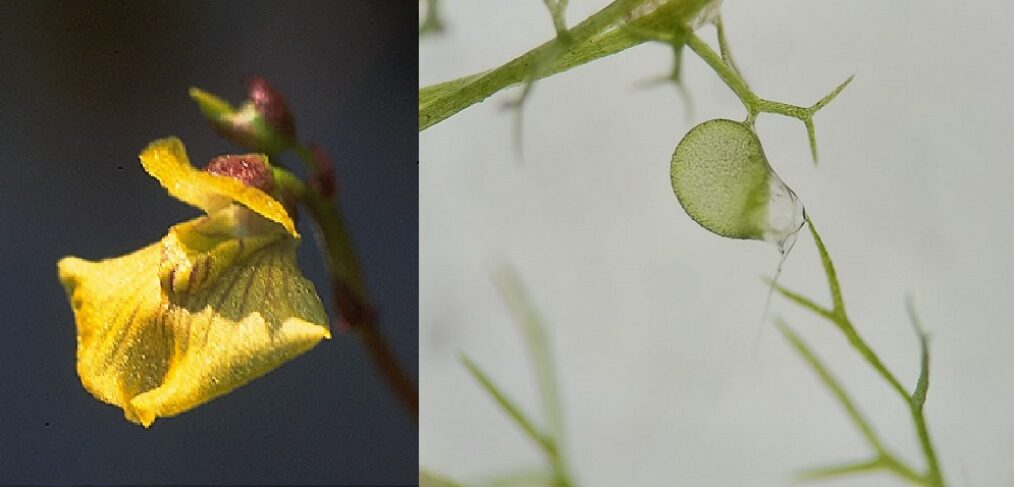
species of the week #64 – Utricularia bremii
The urticularia bremii is a carnivorous plant, also called Bremi’s water hose. It is the fastest predator in the plant kingdom, catching its prey within two milliseconds. By comparison, the human blink of an eye takes 150 milliseconds.
| Distribution status | Extinct in Rhineland-Palatinate |
| Remaining deposits | Hessian Rhön, Bavaria |
| Last sighting rhineland-palatinate | 1996 near Kaiserslautern |
| Habitat | bogs, nutrient-poor waters |
| Threat | Eutrophication, climate change |
The species is a rootless, occasionally free-floating perennial aquatic plant, usually attached to the bottom by shoots. With the exception of the flower, it grows completely under water. The flower is on a thin stem above the water surface. The underground shoots are 25 to 60 millimetres long, pale, have one to eight traps and very small leaves.
The urticularia bremii has an active and very sophisticated trapping mechanism. Unfortunately, it cannot be observed very well because the action takes place under water. It has so-called trap bubbles that are closed by a flap. There is negative pressure in the bubbles, which causes the walls of the bubbles to contract. On the outside of the bladders there are small feeler bristles, and a sugary secretion also helps to attract prey. With the sensory bristles, the water tube registers when a prey animal comes close to the bladder. If this happens to a water flea, for example, the valve opens in a flash, the walls of the bladder expand outwards and the prey is sucked into the bladder. The valve then closes again. After the catch, the prey is digested and the water is transported out of the bladder so that it is ready to grab the next victim.
The plant decomposes its protein-rich prey by excreting enzymes, thus improving its supply of nitrogenous nutrient salts. Because of this ability, it can survive in places where many other plants have no chance.
The urticularia bremii grows mainly in nutrient-poor waters, especially often in bog areas. These waters are becoming increasingly nutrient-rich due to nutrient inputs from heavily fertilised agricultural areas, but also via the air, and the water leek is then displaced by faster-growing competitors. In the future, climate change with increasingly dry summers could cause additional problems. Scientists suspect that in southern Germany in particular, the populations in bogs, swamps and wet meadows could almost disappear. This has already been shown by the summer of 2019, in which many ponds with occurrences of the water milfoil dried up.
Politically necessary:
- Stop eutrophication
- Stopping climate change
Photo : Johannes Marabini and botanical garden Mainz F.Hahn, combined by Team Paulus
